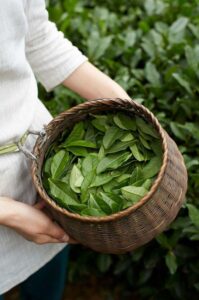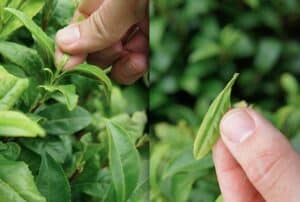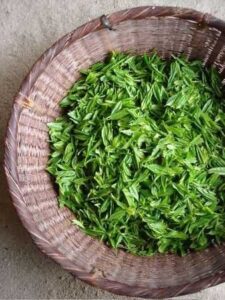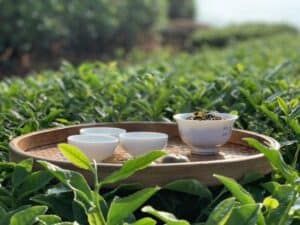
For green tea enthusiasts, growing your own tea plant at home can be a rewarding experience. Starting with seeds, you can begin the process in a simple 6 × 8-inch plastic bag filled with a soil mixture. Place the tea seeds in the center of the bag with the eyes facing downwards, then cover them with a thin layer of charcoal or sand, mixed with coconut flakes—approximately 1 inch thick. Ensure that the seeds receive indirect light and maintain regular watering throughout the cultivation process.
The seed method is particularly popular in regions like Thailand, as it doesn’t require much space and promotes the development of a strong root system, capable of withstanding dry conditions.
Key Factors for Successful Tea Cultivation
The success of growing green tea at home depends on several environmental factors:
1. Soil Conditions: Tea plants thrive in well-drained loamy soil with a slightly acidic pH, ranging from 4.5 to 6.0. The soil should not be too steep, with slopes not exceeding 45 degrees.
2. Humidity and Rainfall: Tea plants need consistent rainfall throughout the year. Ideal rainfall should range from 1,140 to 1,270 millimeters annually. Inadequate water can stunt growth and reduce yields.
3.Temperature: Tea grows best in temperatures between 25-30°C with relatively stable conditions throughout the year, ensuring continuous growth and harvest.
4. Altitude: Tea cultivated at altitudes above 1,000 meters produces high-quality leaves with excellent flavor and aroma, although yields tend to be lower. Tea grown at lower altitudes generally produces higher yields but may lack the same flavor depth.
Conditions That Hinder Tea Growth
Several environmental conditions can hinder the growth of tea plants:
1. Poor Soil Composition: Soil that is rocky or contains gravel can prevent tea roots from growing deeply, limiting nutrient absorption.
2. Inadequate Drainage or High pH: Tea plants need well-drained soil with a slightly acidic pH. Soil with a pH above 6.0 or poor drainage can negatively affect plant health.
3. Excessive Slope: Steep slopes are not ideal for tea cultivation as they can lead to erosion and uneven water distribution.
4. Insufficient Shade: Tea plants require some shade to protect them from direct sunlight. Excessive exposure to sunlight can cause leaf burn and stunt plant growth. Wind protection is also necessary to help reduce temperature fluctuations.
Harvesting Quality Tea
Harvesting is a critical step in producing high-quality tea. The best leaves are typically plucked from the top of the tea plant, consisting of the youngest, most tender leaves. Harvesting is done between March and November, with the top leaves being collected approximately every 10 days. The ideal time for picking is early in the morning between 5:00-14:00 hours to avoid heat buildup that can affect the quality of the leaves.
Tea leaves should never be packed tightly in baskets or sacks during harvest, as the heat from the leaves’ respiration can damage the quality.
Best Tea Seeds for Planting
For successful cultivation, it’s essential to start with high-quality seeds. The best seeds are those that are fully ripe, with a rich sugar color, and still attached to the tree. After harvesting, the seeds should be left in the shade to dry and naturally break apart within 2-3 days. Prior to planting, soak the seeds for 12-24 hours to improve germination, discarding any damaged seeds that float.
By growing your own tea plant at home, you can enjoy a sustainable, organic tea supply that is free from harmful chemicals. For those interested in organic cultivation, exploring organic green tea farming practices ensures a long-term, healthy source of tea.
Sources:
https://www.japanesegreenteain.com
https://i.pinimg.com/originals/72/ea/da/72eada1447275ef65d7ab82ff6cd381e.jpg
https://www.morimatea.com/




